Wearing a wig for the first time can be a terrifying experience for even the most self-assured individual. Our wigs for beginners guide answers some of the most often asked questions we receive on a daily basis, and with the appropriate advice, wig tricks, and style know-how, you’ll be walking around in your fantastic new wig in no time. Sit back, relax, and read through our best wig-wearing suggestions for beginners to find their own effortless style and wear it with show-stopping confidence. Whether you’re dealing with hair loss, pairing it with a Halloween costume, or simply want to try a bold new shade for the day, wigs are a great way to experiment with your style – no salon appointment is needed. But if you’re new to the wig game, how do you get started? In this article, we will show you everything you need to know, including how to find the right hairpiece for you, and how to wear a wig in just five simple steps.
I. Finding The Right Wigs For You
Just like there are many hair types, textures, and colors, the same goes for wigs. However, each type of hair wig has its own strength and features that are totally suited to the desire as well as the purpose of wig wearers.
1. Lace Frontal Wigs
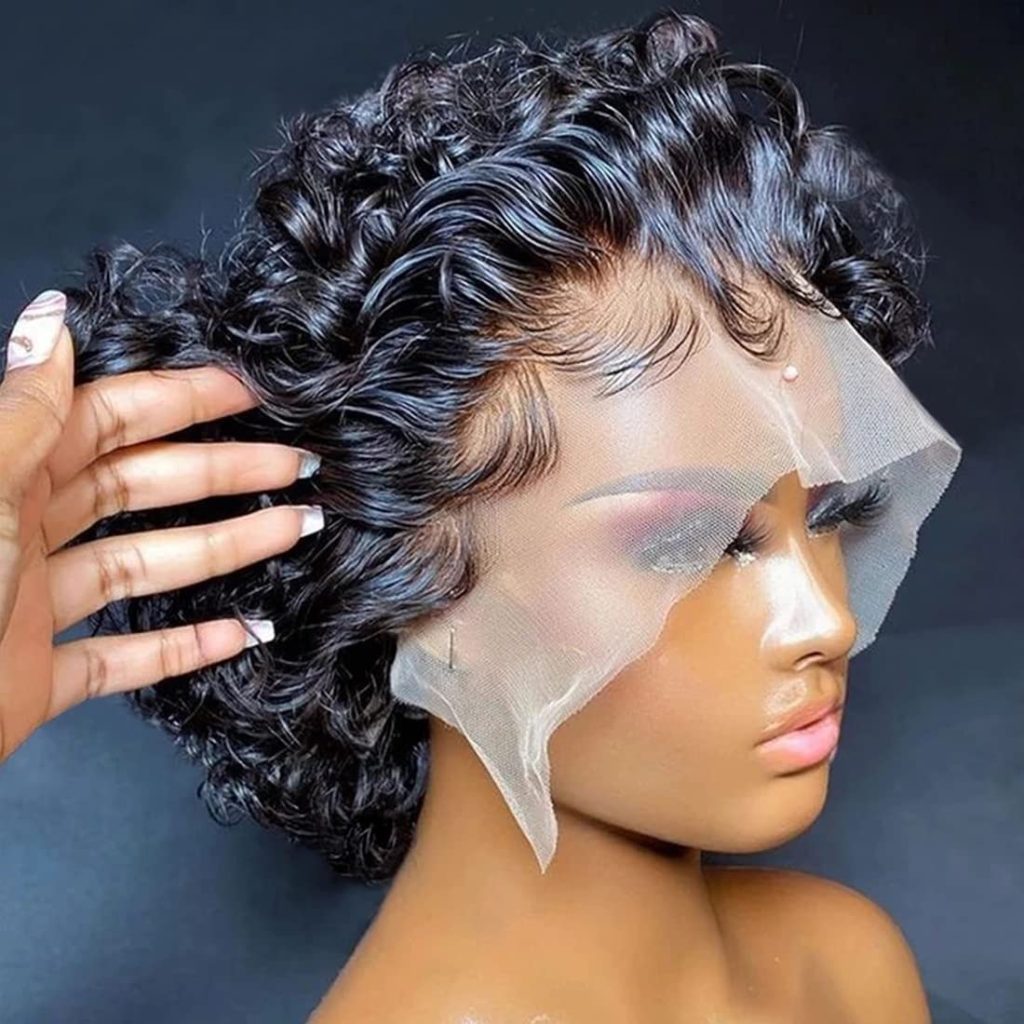
A lace frontal wig is ideal if you prefer to wear your hair away from your face. The hand-tied, delicate finish allows you to part your hair in any way that suits you, and the superfine front section gives the essential unnoticeable hairline. A lace front wig is also great for ladies suffering from complete hair loss.
2. Hand-tied Wigs:
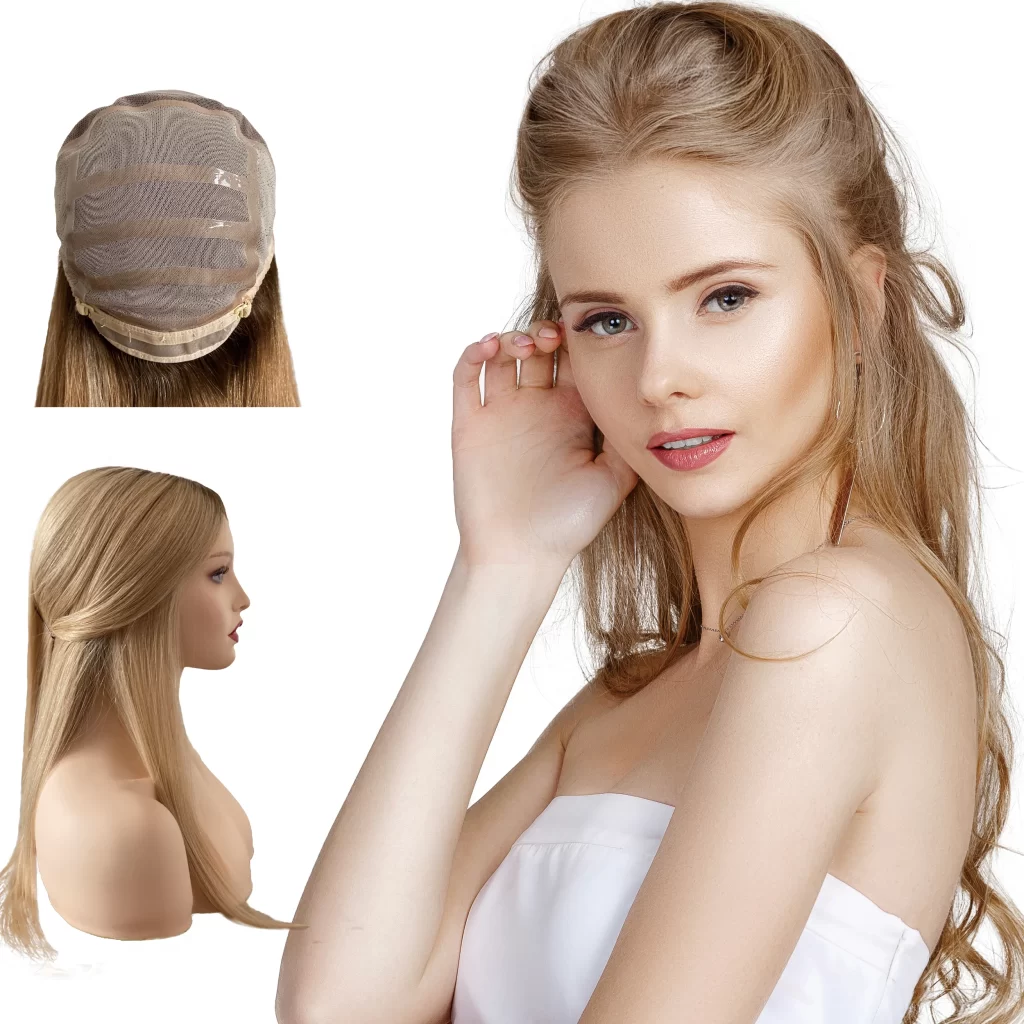
If you like to experiment with different styles, hand-tied wigs are a great way to change up your style without comprising the look and feel of your wig. Each individual hair is lovingly hand-tied onto a soft mesh cap to provide a super-comfortable and super-soft fit. There are no wefts and no mechanical stitching used to imitate all-over natural hair growth, even if you look really closely! So play around with the style of your new wig as if it were your own natural locks!
II. How To Wear A Wig With Step-To-Step Guide?
If you are wearing a wig for the first time, you may want a subtle transition from your natural color and style. Choosing a wig that is close to your natural color and cut initially can help you feel more comfortable in your new wig until you feel more confident experimenting with new and different styles. A quick trip to the beauty store and you’ll find an array of them on display. To avoid getting too overwhelmed, follow these expert tips to buy the right hairpiece for you.
How To Wear Wig #1. Measure Your Head Size
When it comes to size, the average is our most popular choice. Around 90% of customers opt for an average cap size that has a circumference of 22”. However, not all wigs are one-size-fits-all. If you want it to sit comfortably on your head (and look the most natural), it’s a good idea to measure your head size first (FYI: The average head size is around 21 x 14 x 13 inches.). Once you have your exact measurements, it’ll be easier to find a wig (and wig cap) that fits perfectly onto your head. Here are the three basic measurements you’ll need:
- Circumference: Wrap the measuring tape around your head by beginning at the hairline and working it back to the starting point.
- Front to Nape: Start at the middle of the hairline and run the tape down to the nape of your neck.
- Temple to Temple: Place the tape above your left temple (above the ear) and wrap it across the middle of your head to the right temple.
You also can watch this detailed tutorial on these measurements in the video below, including three additional sizes for a better fit. Certain wig types (like custom and lace-front ones) require all six measurements for quality style and comfort.
Take a look at our wig size guide to explore our full wig size range and how to measure yourself for the perfect fit:
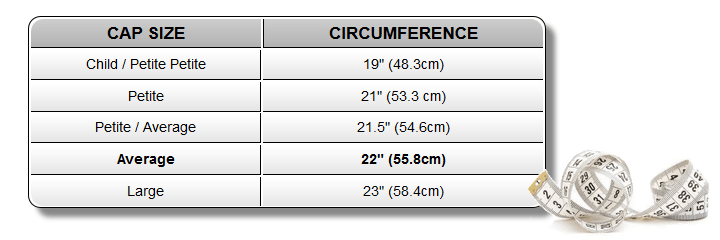
2. Choose A Wig Type
There are two options when it comes to wig types: human hair and synthetic hair. We often say this thing to our customers ” When you are buying a wig, let’s think about your goals or your using purpose for your style”. If you looking for longevity and a unit that looks very realistic, then go with 100% human hair. If you just want a wig for a quick or temporary style, synthetic hair may be able to work for your requirement.
- Human Hair: This is just what you expect—wigs made from actual human hair. That means that the texture is easy to manipulate and you can cut, color and style the hair with no issues. Unsurprisingly, these wigs also look and feel natural. The downside to human hair is that these types of wigs can be pretty expensive. Plus, if you’re looking to wear this look daily, expect close management when it comes to cleaning and styling.
- Synthetic Hair: This type of wig is more affordable and low maintenance than a human hair. Synthetic wigs are pre-styled which can be limiting, but if you are looking for a wig to spice up your look for the day then it’s a great option. However, because of the weaker strands (and inability to use heat tools/or products), synthetic hair has a limited shelf life and won’t look “as natural” the more times you wear it.
→ So you’ve measured your head and found the perfect wig—now it’s time to show off your new style. It only takes five simple steps (from steps 3rd to 7th):
How To Wear Wig #3. Preparation Your Hair
The goal is to keep your locks as flat as possible
- If you have short hair: Brush your hair back (away from your face) and pin it in place. A good tip is to use gel, mousse, or hairspray to keep your hair slicked back with no pesky flyaways.
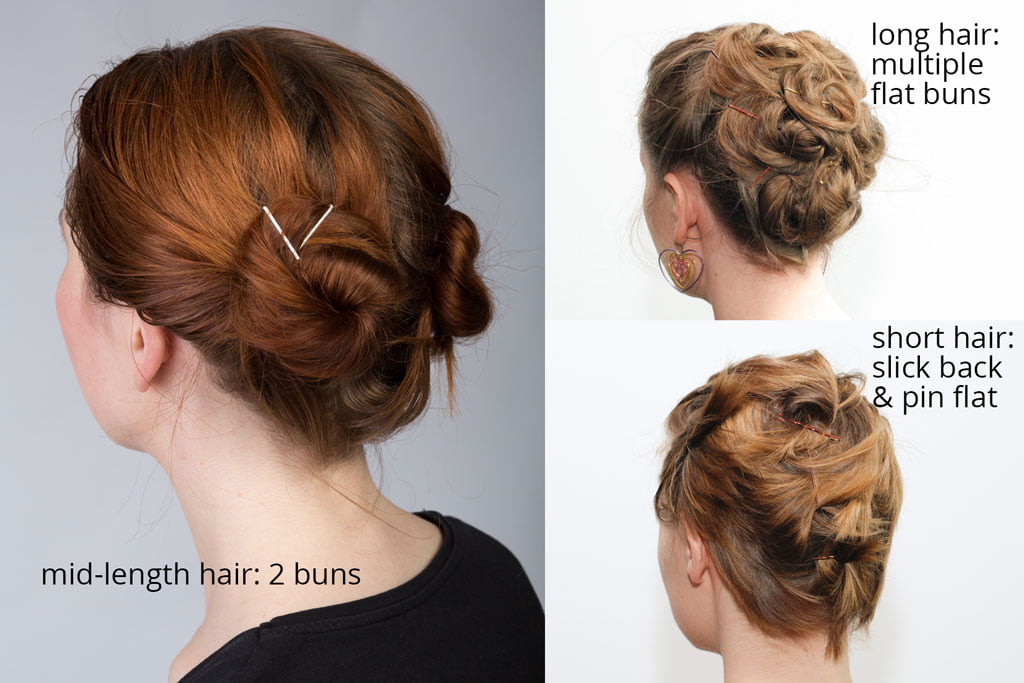
- If you have long hair: Before applying your wig, you should braid your hair down in a cornrow-style pattern. Braiding straight back is common, but you can change the direction and parting style of your braids based on where you’ll be parting your wig unit (if at all).” Wrap the ends together for a flat surface. If you’re not much of a braider, try wrapping your hair around your head and securing it with bobby pins.
4. Apply The Wig Cap On
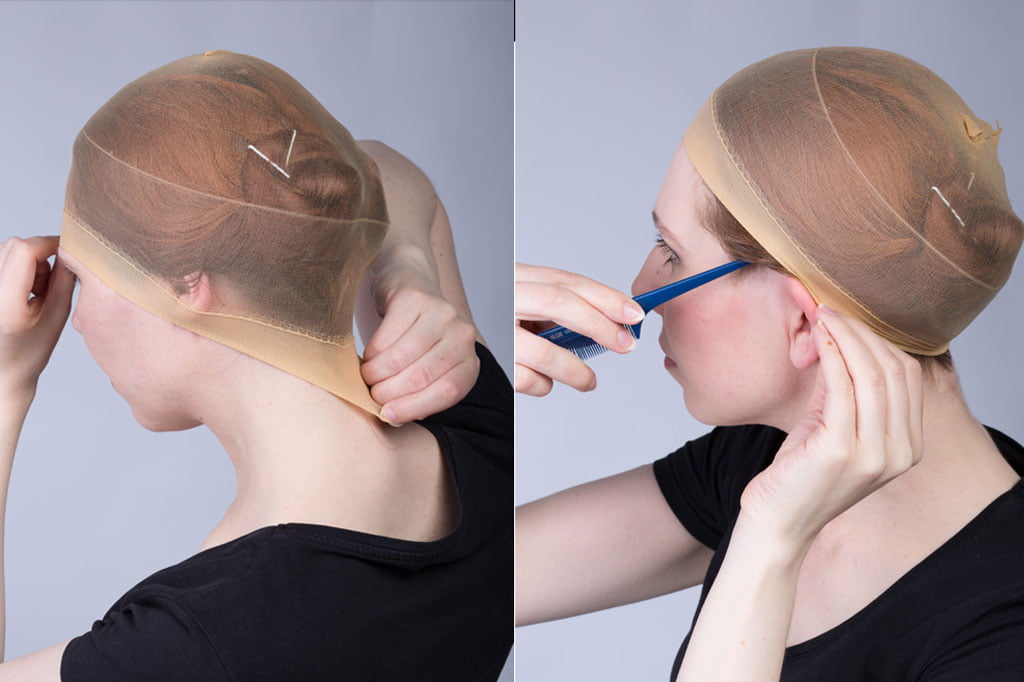
Start at the back and adjust the cap so that it’s sitting firmly on your hairline. Note: When purchasing a wig cap, try getting one as close to your scalp color as possible (which is lighter than your actual skin tone). If the wig cap doesn’t match your scalp color, use foundation powder and lightly pat your shade onto the cap for a better match.
How To Wear Wig #5. Secure With Your Product of Choice
There are many ways to make sure your wig doesn’t fly off. Use…
- Bobby pins: This is the cheapest and easiest way to lay your wig down. Slide the bobby pins between your wig and your hair. It’s totally up to you how many you want to add to keep it comfortable and secure. A great tip is to find bobby pins that resemble the wig’s shade so that they are easier to hide.
- Snap/Wig Clips: These clips take some simple sewing skills to achieve the look. You’ll want to sew in four to six (or more) clips along with the wig. This option is more stable and long-lasting than pins.
- Wig Tape: This has the same effects as wig glue without the worry of residue and toughness after a day of wear. It’s a great alternative for people dealing with hair loss or those who have a sensitive scalp.
- Wig Glue: This tool is a popular option among experienced wig wearers (and fans of lace-front wigs). It leaves a tight grip so you can rest assured your wig won’t slip. Apply products (like KISS All Mighty Bond Kit, Got2B Glued Blasting Freezing Hairspray, or ORS Olive Oil FIX-IT Grip Gel Ultra Hold) along the hairline, and let dry for about 30 seconds (you can use a blow dryer on a cool setting to speed the process) before pressing the wig down.
Use both hands to apply the wig. Apply your wig starting at the bottom and pull it onto your head (like a beanie). Slowly press down on the hairline, so that the [wig] hairline lays on top of the gel and begins to connect and mold along your hairline. Once the wig is sitting on your head, begin maneuvering the piece so it’s covering the whole wig cap.
6. Adjust Accordingly
Make sure your wig fits comfortably on top of your head. How to test it to make sure it won’t slip off? Shake your head like you’re at a rock concert. Any tilting (or if it falls off completely) is a sign you’ll need to add more pins, glue, or clips.


 BEST SELLING PRODUCTS
BEST SELLING PRODUCTS Wig Hair
Wig Hair WHOLESALE
WHOLESALE Contact us
Contact us Sale Events
Sale Events